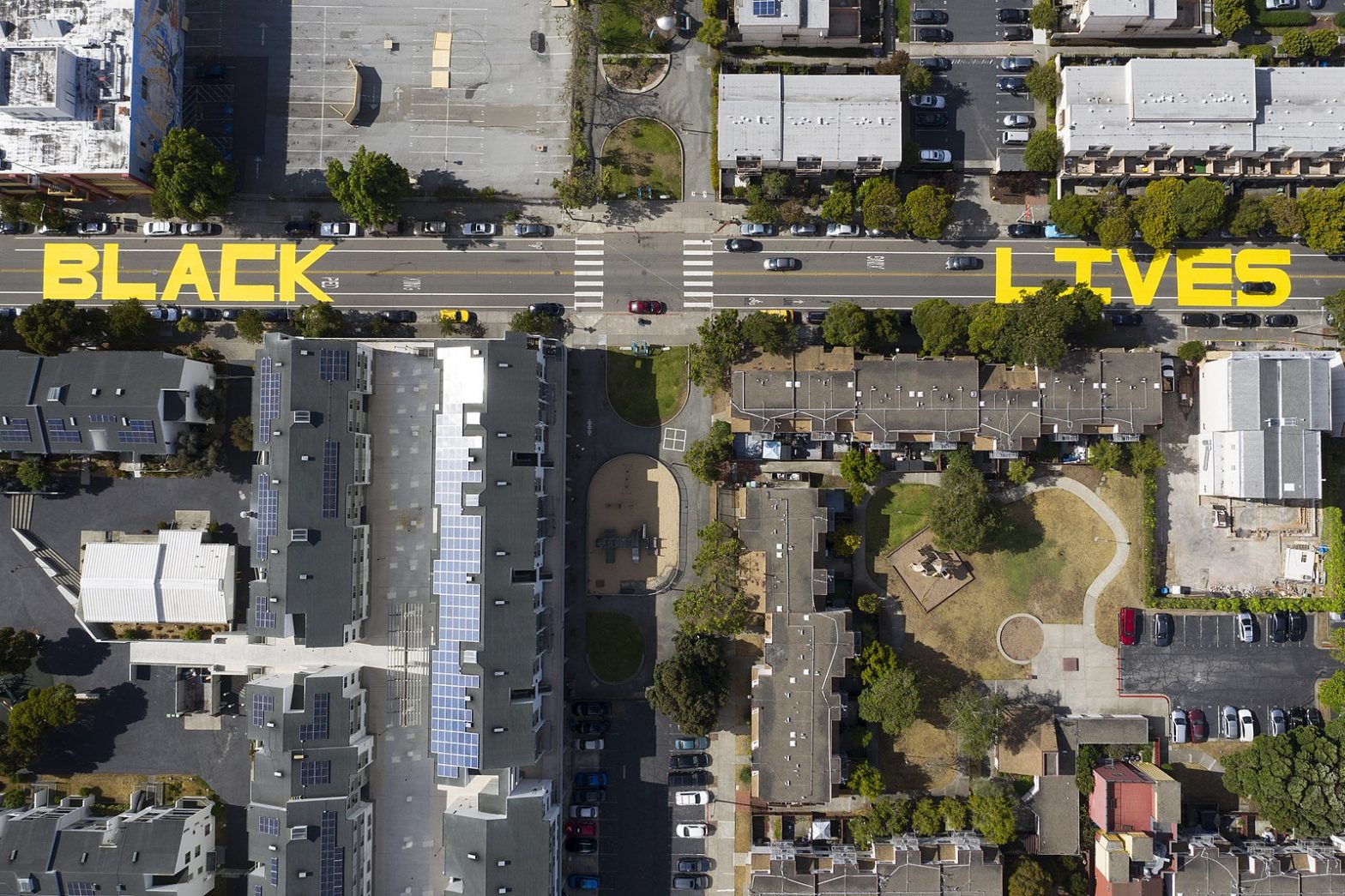About a year ago now, I woke up to my phone’s news feeds blowing up with an admittedly shocking image: fifty-foot high, bright yellow letters spelling out “BLACK LIVES MATTER” across the road leading to the White House, now renamed “Black Lives Matter Plaza.” The project had been kept secret and was a surprise to the entire nation as well as the White House. More than anything, I thought of it as a hilarious stunt and I’m sure liberal America got a kick out of imagining Donald Trump having to look out his windows only to see the huge yellow letters mocking him.
This first mural was certainly a win in the book for BLM organizers: it was a highly visible and highly publicized demonstration of the D.C. government’s support for the movement that also symbolically targeted one the movement’s most vocal critics. While this tongue-in-cheek jab at President Trump elicited an amused response from me the first time, more of these BLM murals started appearing in my news feed. Each time, I started to increasingly question the actual significance of these murals. These murals were popping up everywhere and can be found in many major U.S. cities (in fact, there’s a whole Wikipedia page dedicated to listing all of the BLM street murals found across America.) These murals held a lot of promise for the supporters of the BLM movement. They marked a first step towards BLM solidarity and a hope for subsequent policy changes that would meet organizers’ demands for real action such as defunding nationwide police departments. Yet this much anticipated policy change never really came. While city governments all across the country eagerly plastered their streets with those three words, they still remained hesitant to actually enact the policy changes that BLM organizers and supporters were demanding.
Following the creation of the D.C. mural, Mayor Muriel Bowser received backlash on Twitter from the D.C. chapter of BLM. The chapter accused Bowser of commissioning the mural only as “a performative distraction from real policy change” meant to “appease white liberals.” Soon after, D.C. activists painted an additional message next to Bowser’s original mural, calling on the city, in the same yellow, boldface letters, to “defund the police.” When probed by reporters about her plans to actually defund the D.C. Metropolitan police force, Bowser dodged questions and ultimately her plans will not decrease the MPD budget until 2022.
Similarly, New York City Mayor Bill de Blasio was all over headlines shortly after the original D.C. mural, pictured out on Fifth Avenue in front of Trump Tower painting an identical BLM mural with volunteers. After this highly publicized photo-op, de Blasio proposed a $1 billion budget cut from the NYPD that received much backlash for looking nice on paper without really causing any change within the city. As the Rep. Alexandria Ocasio-Cortez (D-NY) commented, “Defunding police means defunding police. It does not mean budget tricks or funny math.”
Bowser and de Blasio are not outliers either. Of the dozens of cities with a publicly funded BLM street mural, efforts to defund the police have been underwhelming. In the same vein, only Colorado and New Mexico have ended qualified immunity, a policy that some groups argue has protected law enforcement officers from being held accountable for their actions for decades.
So were these murals all for show? It’s hard to say. In some ways, these murals provided BLM some of the legitimacy it had spent years fighting for. By commissioning these murals, local lawmakers helped acknowledge BLM as something that should be in the mainstream rather than just a group on the fringes. The physical creation of this art also brought communities and local governments together to show their support for the cause. Whether or not it was received positively, the wave of BLM street art sparked conversation and forced people to reckon with the existence of the movement, either in their city or on their newsfeed.
On the other hand, the previously discussed lack of follow-up on these murals makes it hard to equate them with real symbols of solidarity with BLM. It’s also important to look at the political environment in which they emerged. At this point last year, taking a jab at President Trump was essentially free public approval points for liberal leaders. Given their origins in front of the pre-Biden White House and Trump Tower, these works took an anti-Trump sentiment that could sometimes overshadow their importance for the movment itself. Moreover, instead of being organic pieces made by organizers and volunteers, these murals have to be sanctioned by city officials so that the art is not deemed vandalism and so that roads can be shut down to allow time for painting. To be sure, many cities housed BLM murals that were not government-approved projects and were made as protest pieces by the movements’ activists. The tone of such murals is vastly different, as they read more as a call to action. While lawmakers got to tout their participation in making their murals as a win for BLM, the movement had really been asking for concrete policy change that would put BLM’s demands into law.
The fate of these murals also remains an unresolved issue. As the bright yellow paint of these murals begins to fade, cities will have to decide whether or not they want to refurbish the murals or cover them up. As long as they remain on American streets, BLM murals will continue to serve as an emblem of city support for this movement, even if that support is more superficial than genuine. Their presence can serve as a reminder for policymakers on the work that is still needed to be done to end police brutality.

